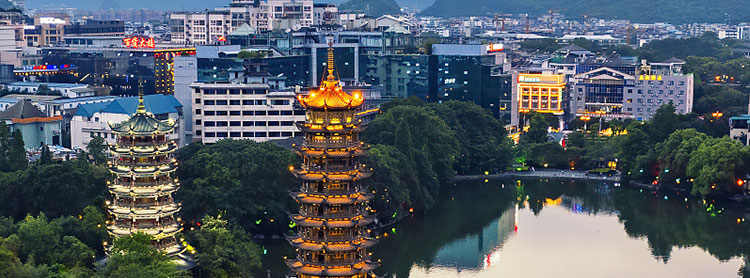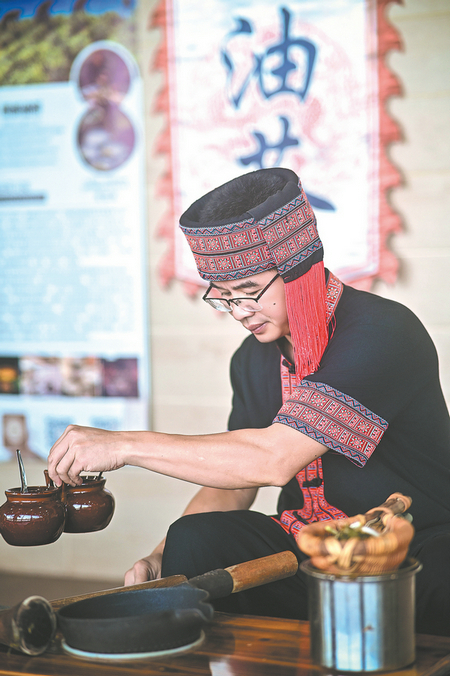
 Media Center
Media Center

Zhou Liwei, an inheritor of the oil tea-making practice, demonstrates the craftsmanship in Guilin, Guangxi. CHINA DAILY
Decades of promotion recently led to him being added to the list of national outstanding individuals in intangible cultural heritage protection by the Ministry of Culture and Tourism.
Gongcheng is hemmed in by mountains on three sides, with higher terrain to the north than to the south. Its subtropical monsoon climate zone has made it a tea production center since ancient times.The county was established during the Sui Dynasty (581-618) when it was originally called Chacheng (City of Tea). Local history chronicles that the city was known for its significant tea cultivation and trade more than 1,000 years ago.
Gongcheng techniques have been preserved since the rise of tea culture during the Tang Dynasty (618-907).As the Yao people moved to the area from other parts of the country, they added ginger to the mix, and created a prototype of oil tea designed to ward against the humid climate.
"The people who lived in the region primarily consumed grains and meat, which were not easy to digest. Oil tea played a balancing role in their diet, as it helped regulate the digestive system," Zhou says.
Oil tea continued to be refined during the Song Dynasty (960-1279),with the addition of more ingredients. By the time of the Ming (1368-1644) and Qing (1644-1911) dynasties, the tea was fried with other ingredients before being boiled, to shorten preparation.
"We primarily use large-leaf green tea, typically harvested during the Qingming and Guyu periods," Zhou says. Among the 24 solar terms, Qingming is one that is observed in early April when the temperature begins to rise and rainfall increases.It is also the time for spring cultivation and sowing. Guyu, or Grain Rain, is observed in late April, and is the last solar term of the spring.
"When picking the leaves, the tips of the branches are also collected.The leaves undergo several processes to become tea, including pan-frying to deactivate enzymes, rolling, drying and storing," he adds.
The key to making Gongcheng oil tea lies in two crucial steps: light hammering and hard pressing.